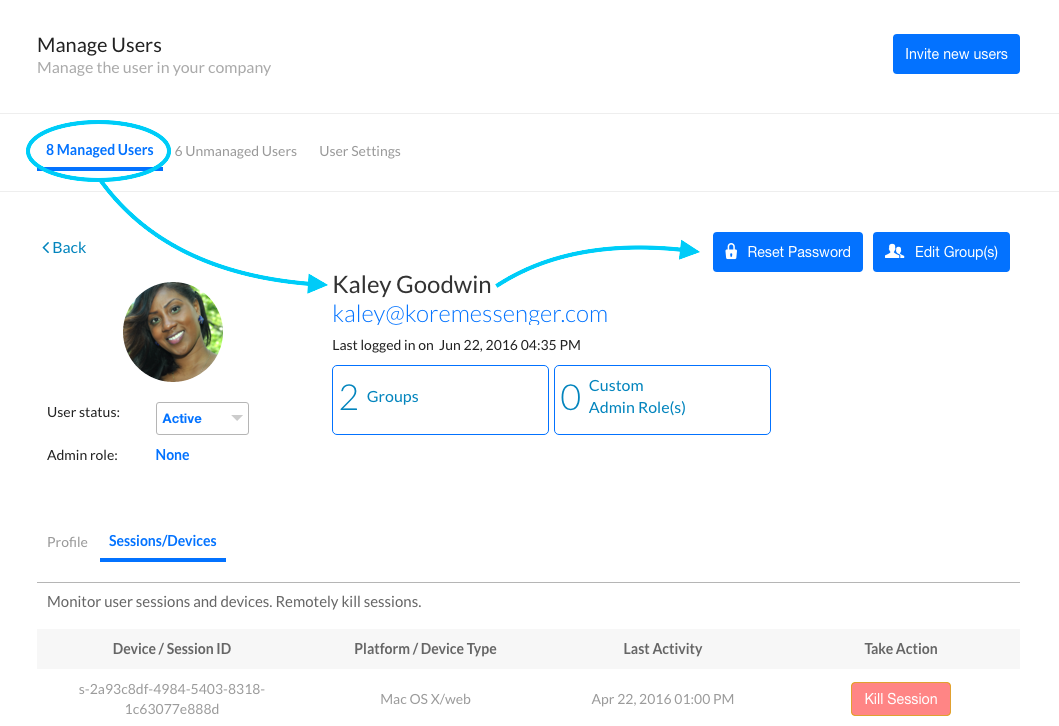Bot 管理者として、シングル サインオン(SSO)が有効になっていない場合、Bot 管理コンソールから自分自身を含むすべてのユーザーにパスワード リセット メールを送信することができます。SSO を有効にすると、Bot 管理者や Kore.ai のユーザーにはパスワード ポリシーが適用されません。このトピックでは、ユーザーを選択し、そのユーザーにパスワード リセット メールを送信する方法について説明します。
ヒント: SSO が有効になっている場合でも、Bot 管理者はパスワード認証を使用して直接 Bot 管理者コンソールにログオンすることができ、SSO をバイパスすることができます。
以下の手順を完了し、パスワード リセット メールをユーザーに送信します。
- Kore.ai Bot 管理者コンソールの[ユーザー管理] モジュールの[ユーザー] ページの [ユーザー] タブで、 名前列のユーザー名をクリックします。[< ユーザー >] ページが表示されます。
- [パスワードのリセット]をクリックします。[ < ユーザー >のパスワード リセット] 確認ダイアログが表示されます。
- [パスワードのリセット]をクリックします。
注意: シングル サインオンが有効な場合、Kore.ai パスワードは使用されず、[パスワードのリセット] ボタンは表示されません。
